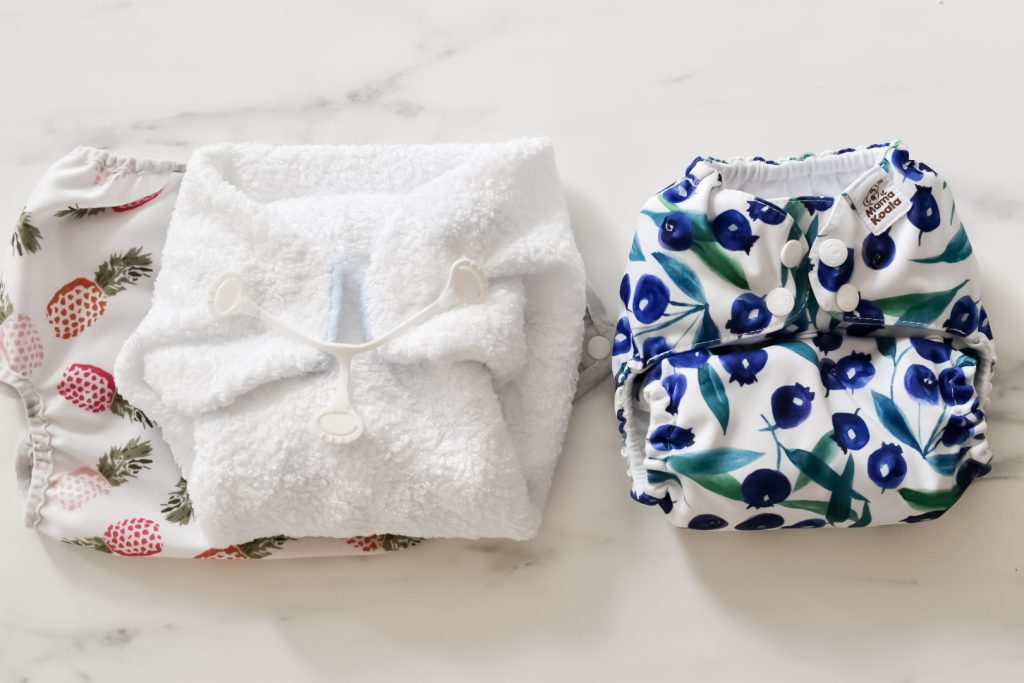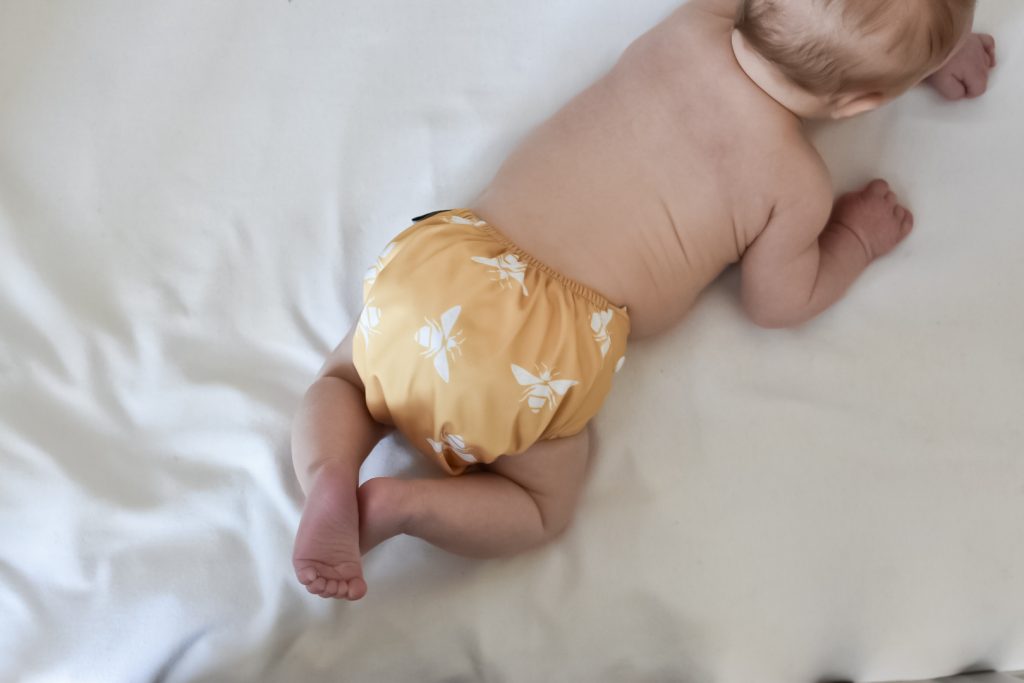Like most people, when I first thought about using cloth nappies, I had a few pre-conceptions about them. I was worried I’d spend all of my time washing, they’d take a long time to get the hang of, and I’d need to buy a whole new wardrobe to fit over them. Thankfully, none of these things turned out to be true. If you’re considering using cloth nappies but are put off by thinking that they’re dirty, difficult and expensive, let me bust those myths for you!
Why consider cloth nappies?
Firstly though, why even consider using cloth nappies? Well, of all the decisions you make as a parent, one of the best things you can do for the planet is to switch to reusables. That’s why I give a large amount of my time to helping parents get started with them. You may not know it, but disposable nappies are largely made of plastic. This makes them incredibly resource- and energy-intensive to produce, and means they will likely sit in the landfill for 500 years. According to Zero Waste Europe, around 33 billion single-use baby nappies were consumed in Europe in 2017, resulting in 6,731,000 tonnes of waste over the year. That’s a lot of nappies!
By choosing reusable nappies, you can use the same 20 nappies thousands of times, saving a huge amount of waste and massively reducing your family’s environmental impact. Hopefully, that gets you thinking about why the switch is worthwhile – time to bust some myths!

1. They’re complicated
The traditional idea of a reusable nappy is the folded terry square that our grandmothers would have used. Lots of people still (understandably!) think this is the only style of nappy that’s available and they’ll have to master complicated folds and safety pinning on a wriggly baby.
This couldn’t be further from the truth! Cloth nappies have come a long way, and the majority of today’s nappies are designed to be easy to use. Most cloth nappies look and function almost exactly like a disposable nappy. There are a few little differences in how they fit, but they’re incredibly simple to master, and once you’ve done it once or twice, it’s no harder than a disposable. You can see just how easy they are in this video!
2. They’re bulky
Classic terry nappies are pretty bulky. There are lots of layers of material to provide absorbency and this can mean that they can look huge on small babies. However, nappy design is improving all the time, and today’s reusables are much more slim fitting.
While they’re all a little bulkier than disposable nappies, the majority are neat and slim. Many are slim enough to fit under clothing from high street brands. Some parents also worry that they are too bulky to allow babies to move easily – there’s no evidence that this is true! Cloth nappy babies hit milestones just as quickly as babies in disposables.

3. They’re expensive
The idea of spending a lot of money can put some people off investing in cloth nappies, but over the long term, they will likely save you money. According to this article by The Nappy Gurus, by the time your child is out of nappies, you will have likely spent around £1,200 on nappies, bags and wipes. By comparison, the average cloth nappy user only spends around £375, including the cost of washing them! That’s a huge saving over the first years of a child’s life. And of course, if you use your nappies for more than one child (as most people do) you’ll save even more!
Having said that, even the upfront cost can be difficult to meet, so if you’re still worried about the cost, why not consider affordable ways to build your stash of nappies:
- Try starting with one or two nappies (in fact that’s what I usually recommend!) and buy more over time.
- Buy preloved nappies online or from a friend.
- Look into affordable options. You can buy simple nappies known as pocket nappies for as little as £4 each. Or you can always opt for terry or muslin nappies – which can be as cheap as £1 each.
4. They’re dirty and smelly
Dealing with any kind of dirty nappy isn’t going to be the most pleasant experience, but there is a perception that reusable nappies are dirtier than disposables. This is definitely a myth! Sure, you need to pop any solids down the toilet once your little one has started weaning, but it’s usually as simple as shaking a little over the toilet. And did you know that you’re actually meant to do that with your disposable nappies too?
Once the solids are down the toilet, you place your nappies in a waterproof bag or mesh bag inside a bucket to be stored. When it comes to washing, all you have to do is move the wet bag, open, into the washing machine. No touching dirty nappies at all! And if you keep your wet bag or bucket open to the air you won’t get any smells from your nappies while they’re waiting to be washed. In fact, in my time supporting new parents with cloth, every single one has found it more pleasant than using disposable nappies!
5. They’re hard to wash
Speaking of washing, you might have heard rumours that cloth nappies have a complicated washing method, including soaking and bleaching and all sorts besides. This is now very outdated – gone are the days of soaking nappies! You simply store them dry in a waterproof bag or bucket, before washing in your machine.
It is important to wash nappies well so that they remain hygienic and safe for sensitive baby skin, but once you learn how to do it, it’s very straightforward – washing nappies in high temperature will kill germs including coronavirus so don’t worry. I have a helpful guide to washing nappies that takes you through it step-by-step – it’s no more complicated than washing clothes.
6. They leak
Of all the cloth nappy myths, this one is the least true, because one of the huge benefits of reusables is that they are much less likely to leak than disposables! If you’ve ever dealt with a newborn poonami (you know the ones I mean…) then you’ll be happy to hear that reusable nappies are often bombproof. The strong elastics and fabric work much better than their disposable equivalents, making them super reliable. Not only does this save on washing clothes, but it actually means nappy changes are often more hygenic.
I hope this helps you consider using cloth nappies with your family. If you’d like more information on different kinds of nappies, you can head over to my blog where I have plenty of helpful articles. Good luck with your nappy journey!